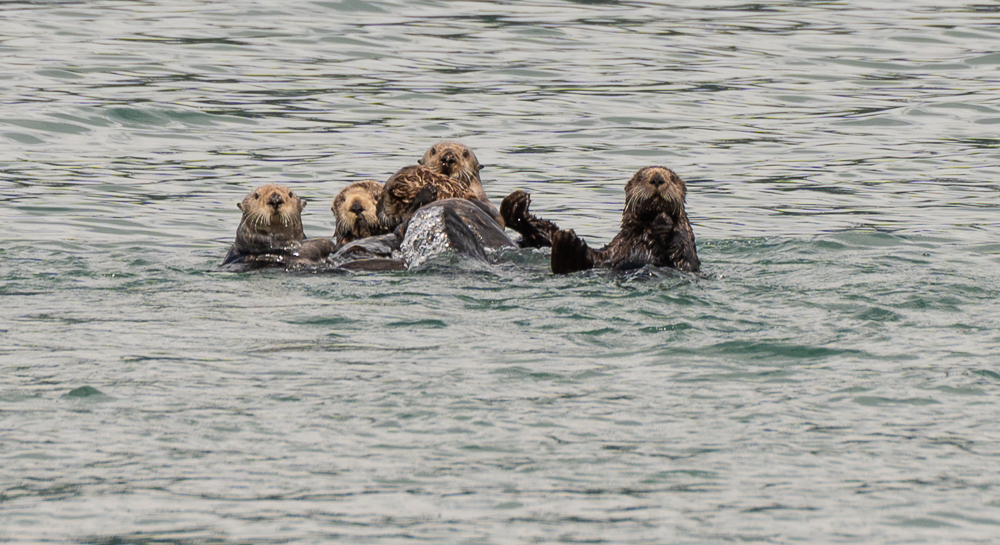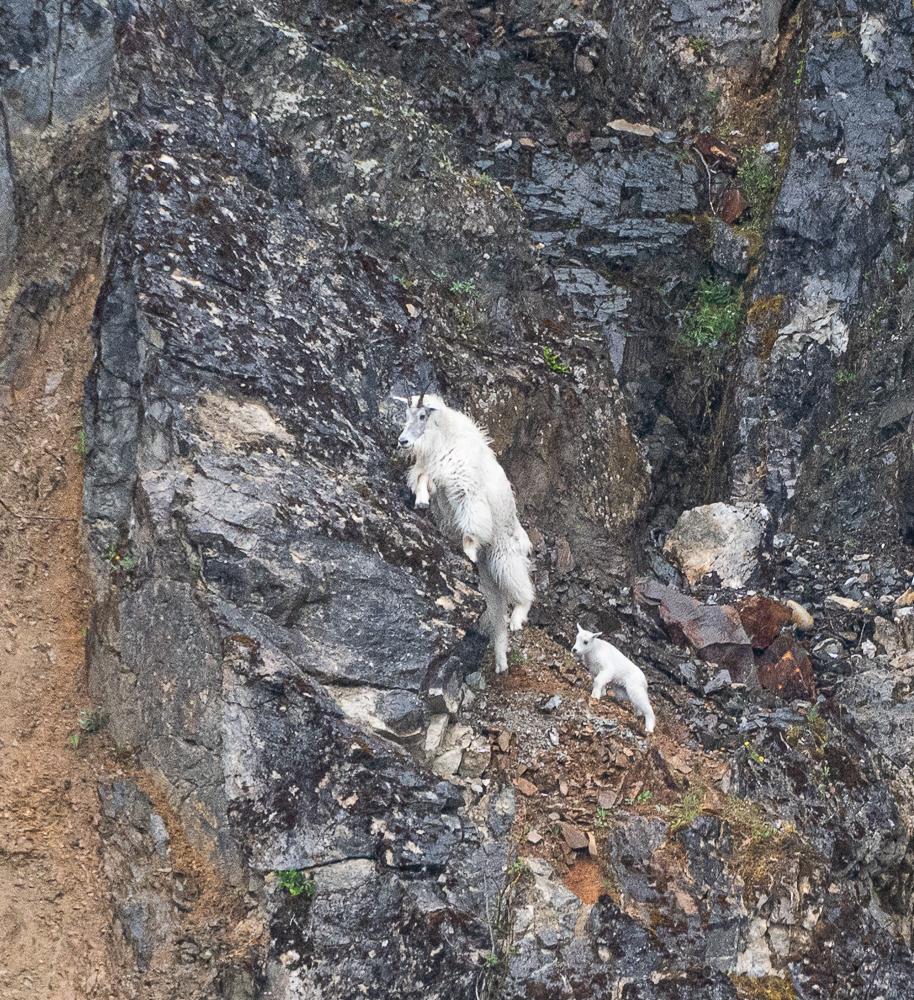The glaciers that give this National Park its name are in the north end of the bay, but there is so much to see on the journey up to the ice!
The sea otters are some of the most adorable critters, especially when they’re clutching their little pups. But they’re not popular with fishermen since they have no natural predators and they’re voracious eaters. They will eat everything in sight, wiping out the crabs and other bottom creatures, until the food is gone and they move on to another area. At some point, their numbers will overwhelm the available food sources and their population will crash. But yes, they are really cute.


We spotted a number of bears, and because it was early in the season, it was mating time. Males follow females that they’re interested in, and we saw several pairs of persistent males and uninterested females. This male was steadily pursuing his love interest, and she kept trotting and eventually running away from him.


We spotted three different “romantic” couples, as well as one female with a nice big second-year cub.

As we got closer to the glaciers, we started seeing harbor seals resting on floating ice. As it was still early in the season, the seals were giving birth so we needed to keep a big distance from them so we didn’t disturb the fragile new pups.

And finally we arrived up at the main glaciers – the Reid, Lamplugh, Johns Hopkins, Margerie, and the Grand Pacific. We’re lucky enough to be able to anchor by the Reid, giving us time to just look and listen to it for hours and hours.

What’s sad is that we can see more and more of the mountain underneath, and we’ve witnessed the very noticeable changes yearly since our first exciting visit to see it in 2014.

All the glaciers are changing so quickly – it’s like watching old friends decline, and it breaks our hearts.
We had the upper part of the bay all to ourselves one day, and we headed up to see the “show glacier” – the Margerie, that one that the cruise ships spend most of their time visiting. It’s splashy-flashy, as glaciers go, though not as blue as some of the other ones.

We were lucky this time – we heard some cracking like thunder, then silence… then the whoosh of some bits of ice falling. The glaciers are always making noises – they’re rivers of ice that are constantly flowing down the mountain, carrying snow that fell about 200 years ago that’s now compressed into dense ice. This day, the Margerie was more active than we’ve ever seen, eventually gifting us with a nice big calving event. You’ll note that the video is quite short, because we were fairly close to the glacier’s face, and the ice-laden wave was not to be trifled with.
You can hear Jim yelling about the wave, so I had to put the camera down and get the boat moving back and angled to take the wave. Yowza!













